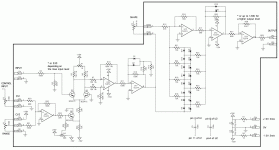I don't see any reason this couldn't be run at +/-9v as long as you have enough signal exiting U1CThat is awesome. I kind of want to take that circuit and throw it in a stompbox. I’m assuming I’d need some sort of charge pump or converter to get that +15 -15 v
Here’s the build docs, under Wavefolder:



